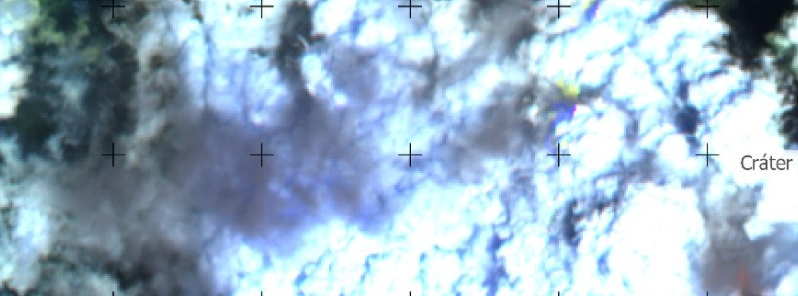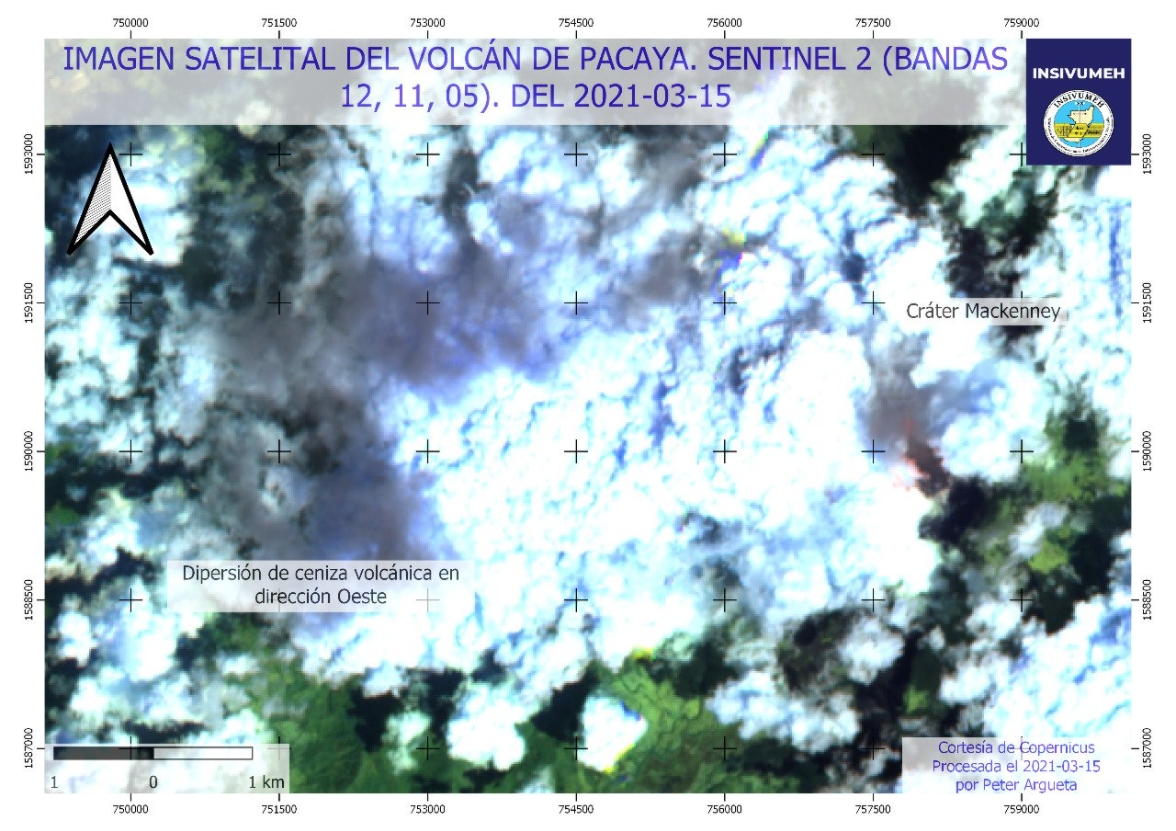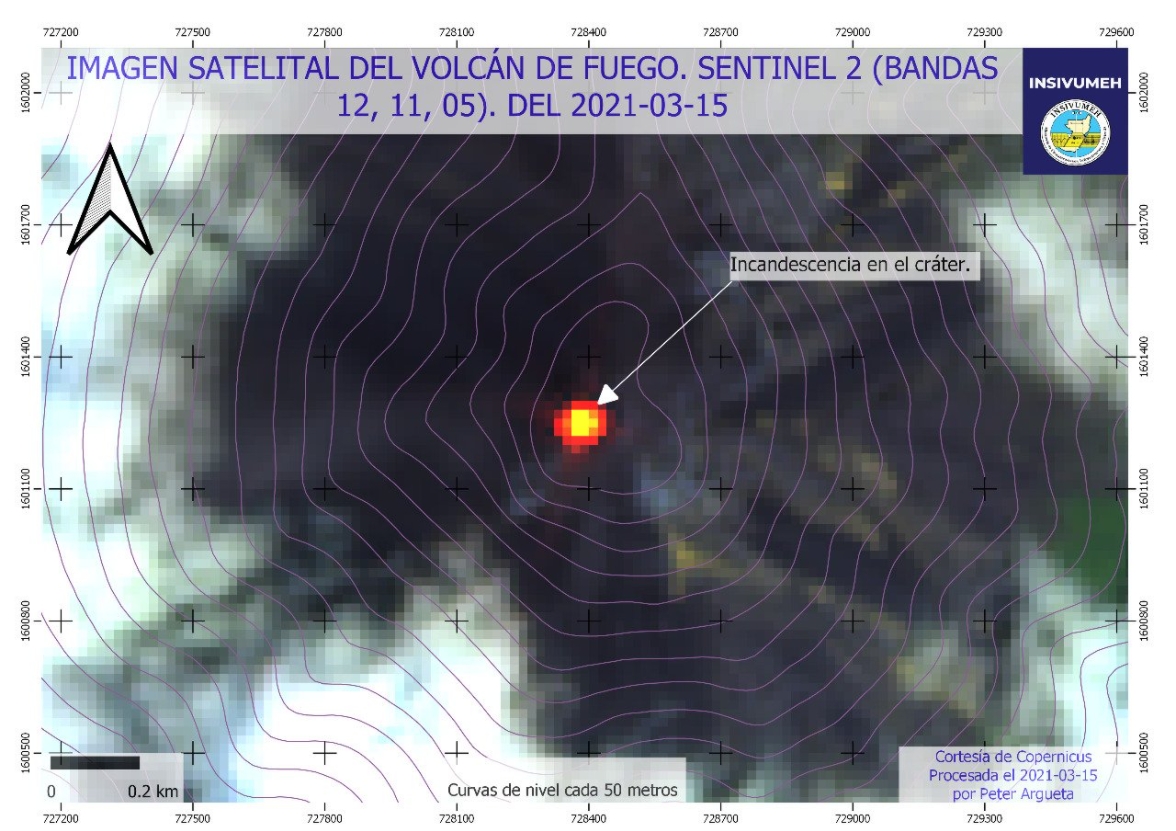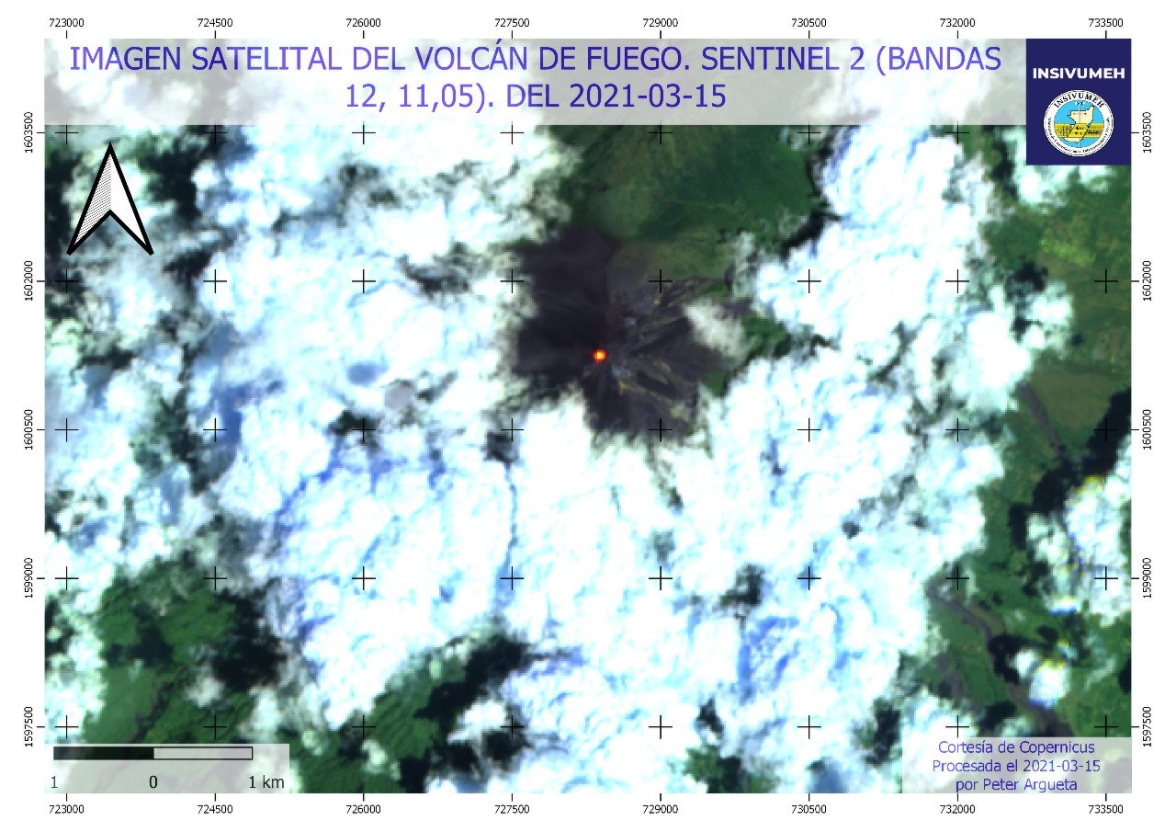Increased eruptive activity continues at Pacaya volcano, dense ash columns reported, Guatemala

Increased eruptive activity continues at Guatemala's Pacaya volcano with dense, dark ash columns, indicating that magma is pushing its way toward the surface. The volcano has been erupting since early February, posing risk to the surrounding communities.
In a bulletin posted by INSIVUMEH on Monday, March 15, the institute reported that ash columns reached up to 2 000 m (6 600 miles), and drifted W and NW. However, atmospheric conditions did not allow for direct observations of the crater.
The effusive activity continues to feed the lava flow on the southern flank, which was about 1 500 m (4 900 feet) long on Monday and up to 1 800 m (5 900 feet) on Tuesday. The dark ash columns are indicators that magma is rising towards the surface.
Weak ashfall was reported early Tuesday morning (LT) in the village of El Patrocinio. At the time, it was still not possible to directly observe the volcano due to clouds.
INSIVUMEH seismic stations constantly register tremors associated with the rise of magma, as well as the continuous degassing at the crater.
"It is not ruled out that more lava flows are generated in other flanks or the generation of degassing columns with abundant ash," the agency wrote.
Eruptive activity has been ongoing at Pacaya since early February, making nearby residents uneasy in fears of tremors and volcanic eruptions.



Image credit: INSIVUMEH
EJERCICIO DE SIMULACIÓN: ACTIVACIÓN DE PROCEDIMIENTOS DE RESPUESTA POR ACTIVIDAD DEL VOLCÁN DE PACAYA. pic.twitter.com/c5v3eF5foM
— CONRED (@ConredGuatemala) March 16, 2021
GUATEMALAVOLCÁN PACAYA | Se activa un segundo cráter en el Volcán de Pacaya.
El Volcán se ha mantenido inestable, ante una intensa actividad, a tal punto de que se activó un segundo cráter en su cono. pic.twitter.com/vK6wMQYrie— (@EarthquakeChil1) March 16, 2021

Geological summary
Eruptions from Pacaya, one of Guatemala's most active volcanoes, are frequently visible from Guatemala City, the nation's capital. This complex basaltic volcano was constructed just outside the southern topographic rim of the 14 x 16 km (8.7 x 9.9 miles) Pleistocene Amatitlán caldera. A cluster of dacitic lava domes occupies the southern caldera floor.
The post-caldera Pacaya massif includes the ancestral Pacaya Viejo and Cerro Grande stratovolcanoes and the currently active Mackenney stratovolcano.
The collapse of Pacaya Viejo between 600 and 1 500 years ago produced a debris-avalanche deposit that extends 25 km (15 miles) onto the Pacific coastal plain and left an arcuate somma rim inside which the modern Pacaya volcano (Mackenney cone) grew.
A subsidiary crater, Cerro Chino, was constructed on the NW somma rim and was last active in the 19th century.
During the past several decades, activity has consisted of frequent strombolian eruptions with intermittent lava flow extrusion that has partially filled in the caldera moat and armored the flanks of Mackenney cone, punctuated by occasional larger explosive eruptions that partially destroy the summit of the growing young stratovolcano. (GVP)
Featured image credit: INSIVUMEH

Commenting rules and guidelines
We value the thoughts and opinions of our readers and welcome healthy discussions on our website. In order to maintain a respectful and positive community, we ask that all commenters follow these rules:
We reserve the right to remove any comments that violate these rules. By commenting on our website, you agree to abide by these guidelines. Thank you for helping to create a positive and welcoming environment for all.